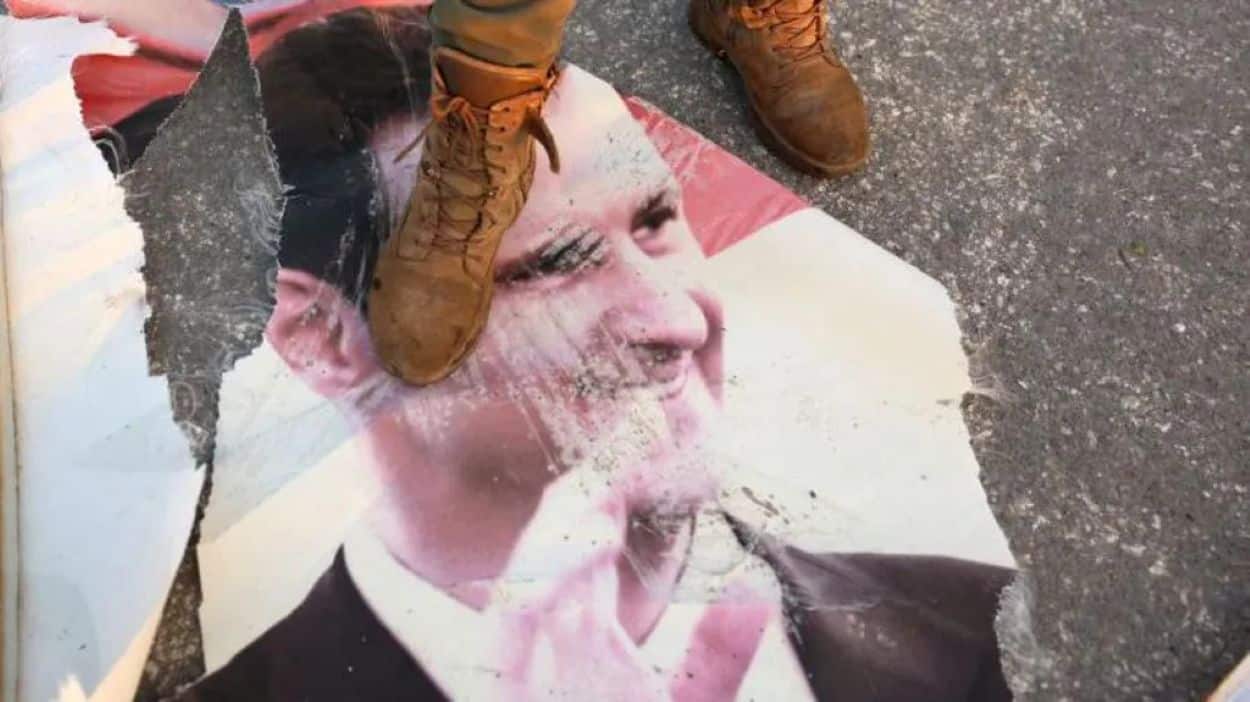Less than two weeks after the Islamist group Hayat Tahrir al-Sham (HTS) initiated its campaign, uncertainty surrounds Syrian President Bashar al-Assad’s location. A Syrian war monitor has reported that Assad has left the country following significant territorial losses to a swift rebel offensive, which reportedly entered Damascus recently.
Residents of Damascus reported hearing intense gunfire, following claims by a source close to Hezbollah that fighters from this major ally of Assad had withdrawn from their positions around the city. This information aligns with reports of Assad’s departure from Syria via Damascus International Airport before the withdrawal of army security forces, as stated by Rami Abdel Rahman, head of the Syrian Observatory for Human Rights.
The unfolding situation in Damascus followed closely after HTS declared they had taken control of the strategic city of Homs en route to the capital. Despite the Defense Ministry’s initial denial of rebel presence in Homs, describing the city as “safe and stable,” the reality on the ground indicated otherwise.
Read: Bashar al-Assad Flees Syria – Rebel Forces Seize Control
Hezbollah’s Strategic Withdrawal
In a significant development, Hezbollah confirmed the redeployment of its fighters, with some moving towards Latakia in Syria and others towards Hermel in Lebanon. This move came shortly after Hezbollah’s involvement increased, reportedly sending 2,000 fighters to a location near the Lebanese border to defend its positions.
As the rebels advanced, the Defense Ministry maintained that the Syrian army was bolstering defences in southern regions and around Damascus, asserting a “strong security and military cordon” around the capital. However, public sentiment in Damascus reflected a growing panic, with residents experiencing traffic jams and rushing to secure resources amid the chaos.
In a Damascus suburb, protesters demonstrated their dissent by toppling a statue of Assad’s father, Hafez al-Assad, signalling a symbolic rejection of the regime. Meanwhile, images from Hama, Syria’s fourth-largest city, showed deserted military vehicles, some ablaze, illustrating the gravity of the rebels’ advance.
The conflict’s intensification prompted Jordan, the United States, and Russia to advise their citizens to leave Syria. After government forces withdrew, local fighters took over security duties for public properties and civil institutions on the ground in Daraa. Meanwhile, an Iraqi security source reported that Baghdad had allowed entry to hundreds of Syrian soldiers fleeing the conflict via the Al-Qaim border crossing.
Read: Mohammed Al-Jolani’s Rise Syria’s Rebel Victory
The resurgence of violence has led to calls for political dialogue to resolve the conflict, with discussions among Turkish, Iranian, and Russian officials aiming to initiate talks between the Syrian government and legitimate opposition groups. However, Russian Foreign Minister Sergei Lavrov emphasized the inadmissibility of allowing terrorist groups to control Syrian territory, reflecting the complex international stakes involved in Syria’s prolonged conflict.






